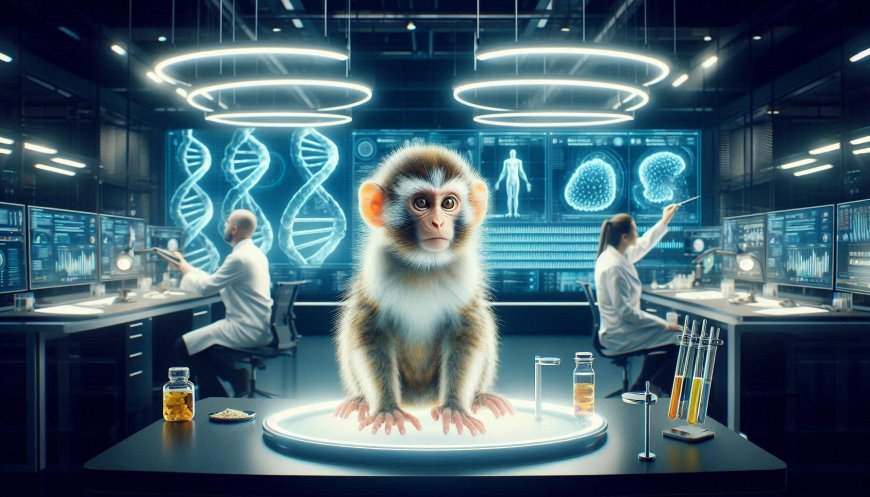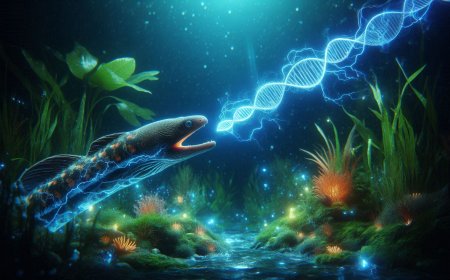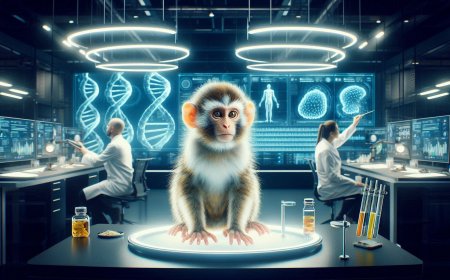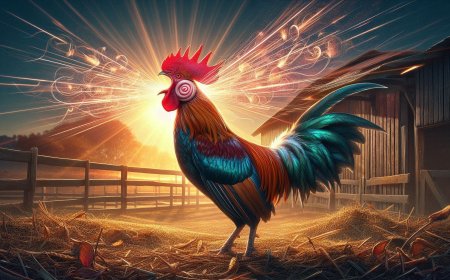The Birth of a Chimeric Monkey: A Leap Forward in Primate Science
Explore the groundbreaking scientific achievement in genetic engineering with the birth of a chimeric monkey, a pioneering leap in primate science. Discover the implications and advancements in laboratory genetics, primate biology, and innovative research in evolutionary studies.

In a monumental breakthrough, researchers have succeeded in creating the first chimeric monkey, marking a pivotal advancement in genetic engineering and primate research. This achievement, led by scientists at the Chinese Academy of Sciences, could reshape fields like species conservation, biomedical studies, and stem cell research.
Understanding Chimerism in Primates
For the first time in history, a monkey was born with cells originating from two distinct embryos. This biological phenomenon, known as chimerism, had previously only been accomplished in smaller animals like mice and rats. Now, it has reached the primate world. Senior researcher Zhen Liu and his team accomplished this extraordinary feat using embryonic stem cell lines from cynomolgus monkeys, commonly used in medical research. Published in Cell, their findings represent a leap in understanding how pluripotent stem cells—cells that can become any type of cell—function in non-human primates.
The research was nothing short of meticulous. Nine different stem cell lines were derived from blastocyst-stage embryos, and a carefully selected subset of these cells was injected into early-stage monkey embryos. The result? The birth of six monkeys, one of which displayed high levels of chimerism. This opens up incredible potential for future research in developmental biology and medical applications.
The Making of a Chimeric Monkey
What makes this breakthrough especially remarkable is how the researchers tracked the chimeric cells. By tagging the stem cells with a green fluorescent protein, the team was able to trace the chimeric cells’ contributions to various tissues throughout the monkey's body. The results were astonishing: stem-cell-derived tissues were found in critical organs such as the brain, heart, liver, kidneys, and gastrointestinal system. Even more impressive, the chimeric cells contributed between 21% and 92% of tissue in these organs, with an average of 67%.
One of the most significant findings came from the reproductive tissues. The presence of stem-cell-derived cells in the reproductive system hinted at a possibility that these cells could be passed on to future generations. This discovery not only highlights the depth of chimeric integration but also opens the door to discussions about the genetic legacy of chimeric organisms.
The Implications of this Breakthrough
The successful creation of a chimeric monkey goes far beyond academic curiosity. It has immediate and profound implications in several key areas:
- Biomedical Research: Monkeys are already widely used in medical research due to their genetic closeness to humans. Chimeric monkeys can serve as more accurate models for studying diseases, especially in neurology, where the complexity of the brain requires precise models for studying conditions like Alzheimer's, Parkinson's, and autism.
- Species Conservation: As animal populations face increasing threats due to habitat destruction and climate change, chimerism could provide a future method for aiding endangered species by introducing genetic diversity and helping sustain populations.
- Stem Cell Research: This study significantly advances our understanding of stem cell potential, especially in primates. It paves the way for possible future applications in regenerative medicine, where chimeric models could help test organ transplantation techniques or tissue repair.
The Future of Chimeric Research
While this study is groundbreaking, it is only the beginning. Liu’s team has already set their sights on improving the efficiency of chimeric monkey production. By refining the techniques used to cultivate stem cells and optimize embryo development environments, they hope to increase survival rates and produce even more stable chimeric organisms.
This cutting-edge research not only broadens our knowledge of primate biology but also pushes the boundaries of what is possible in genetic engineering. As we look to the future, the birth of the first chimeric monkey stands as a beacon of scientific innovation, with implications that may touch everything from human health to the preservation of wildlife.
The dawn of the chimeric age has arrived, and with it, new possibilities for medicine, conservation, and the understanding of life itself.
What's Your Reaction?









































































































